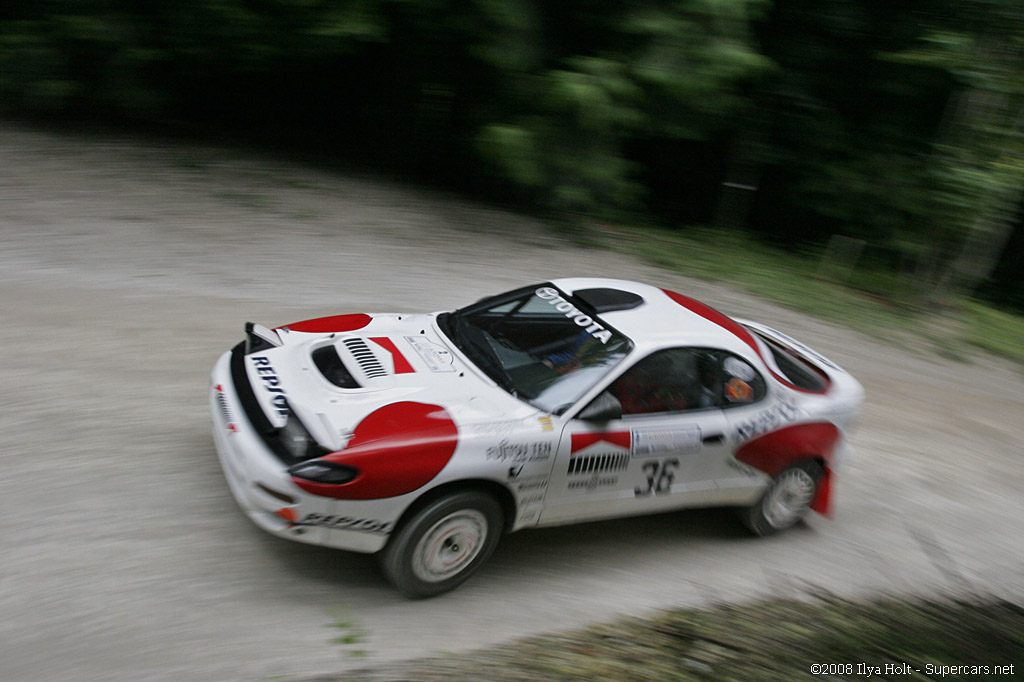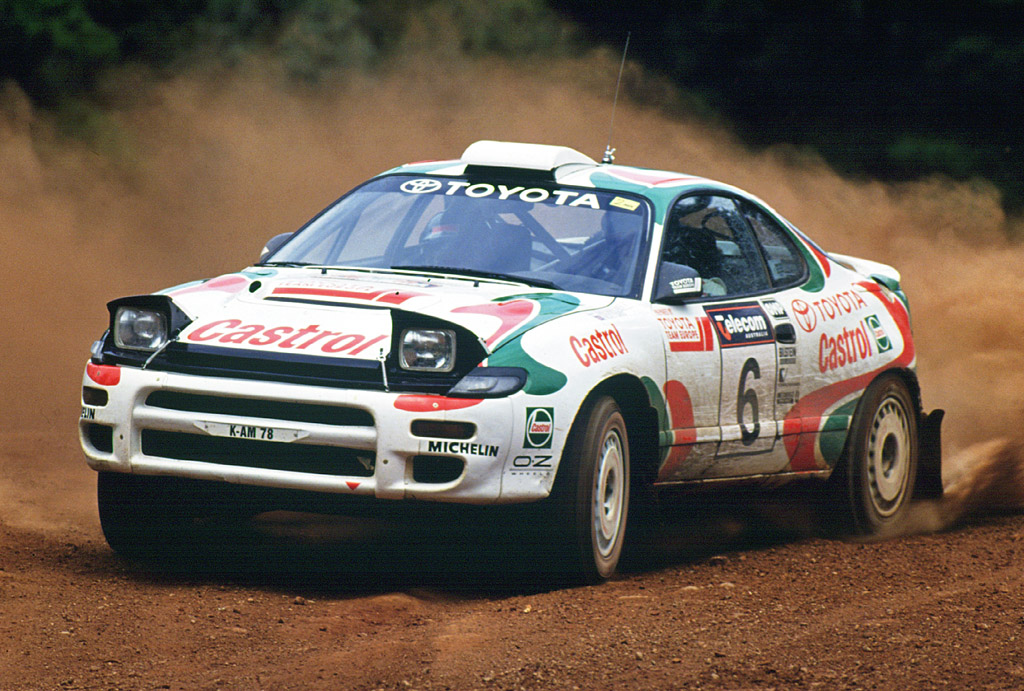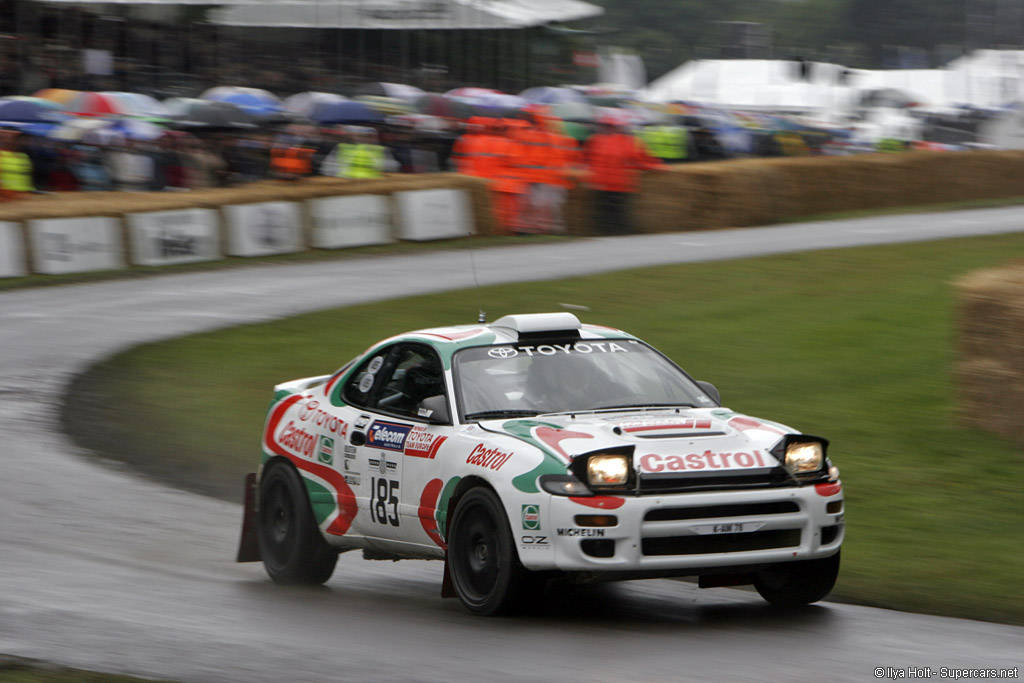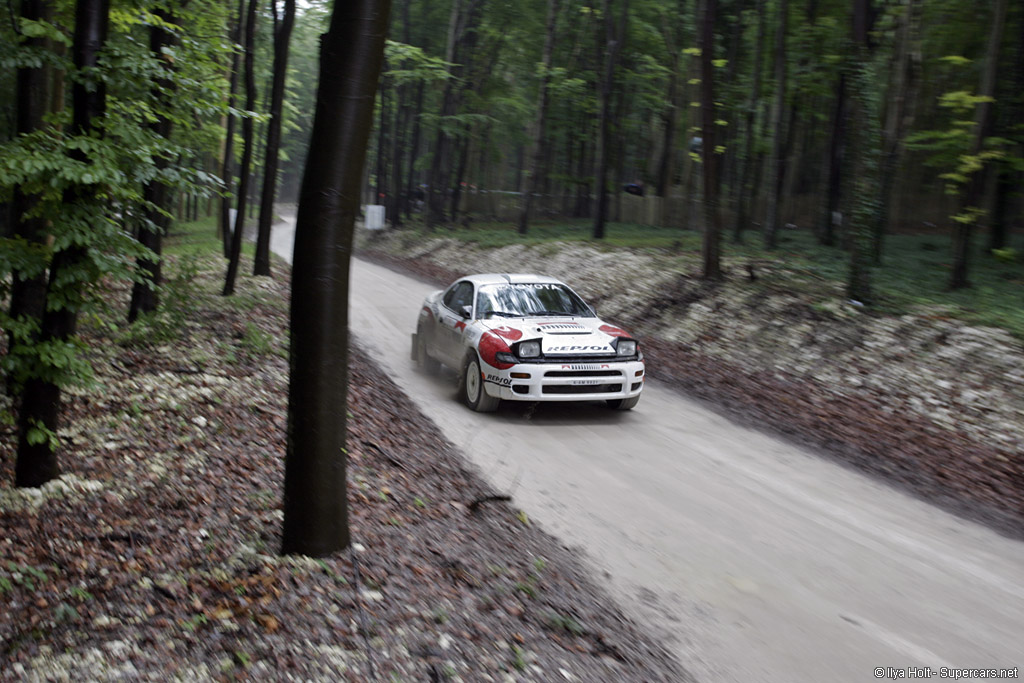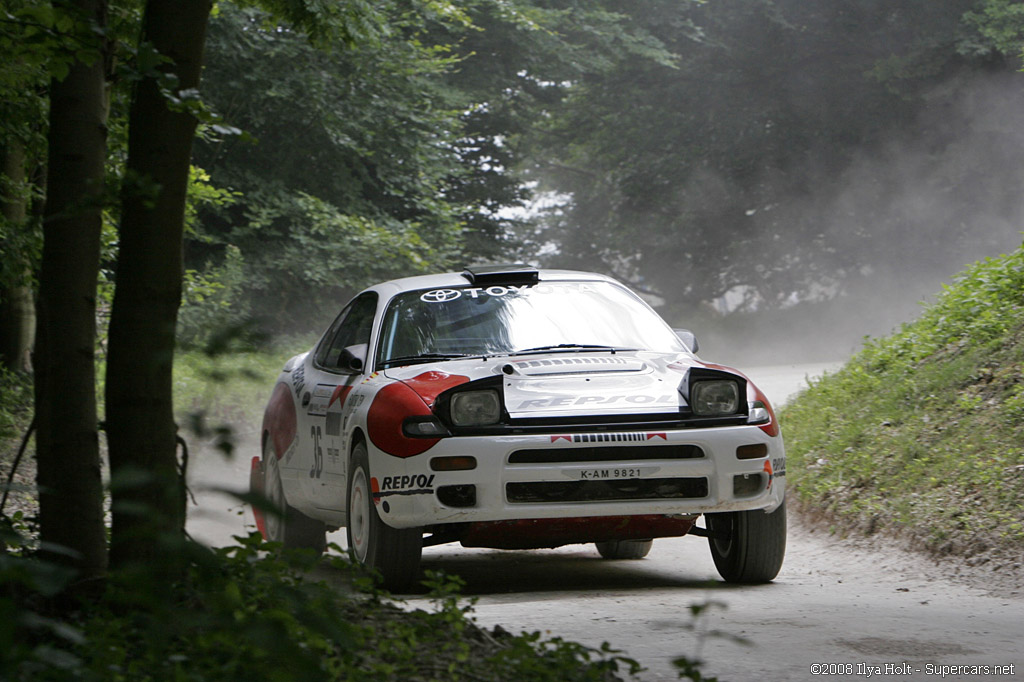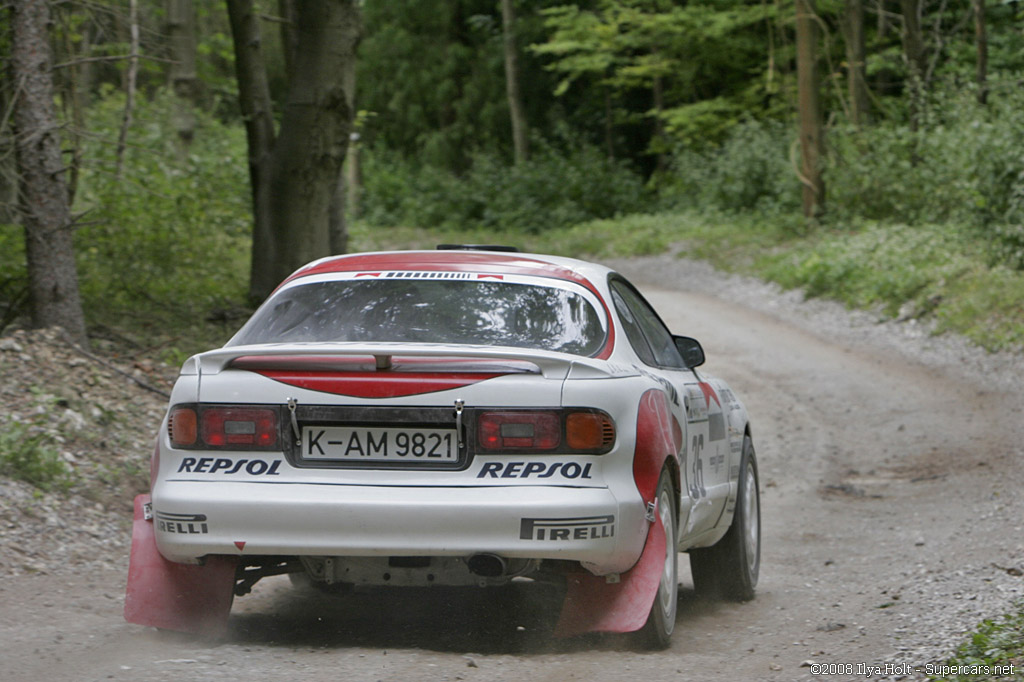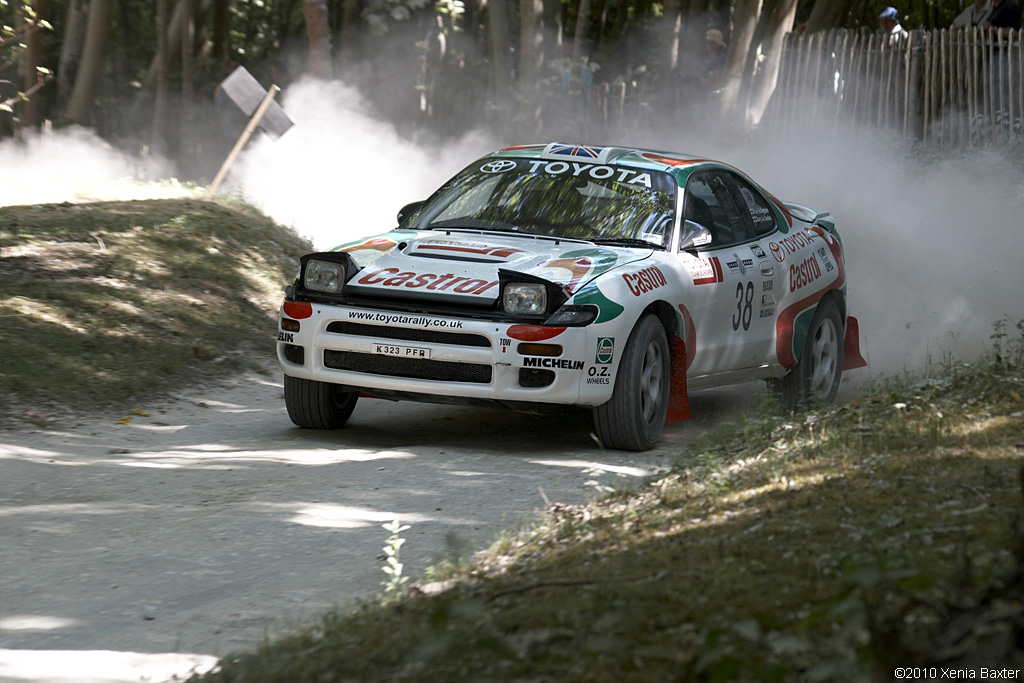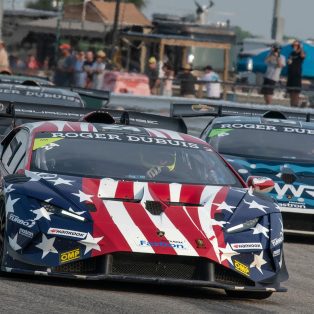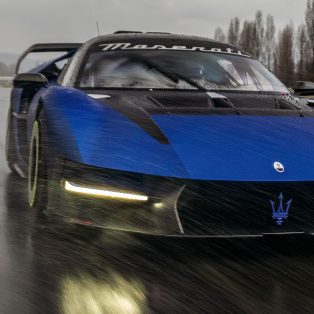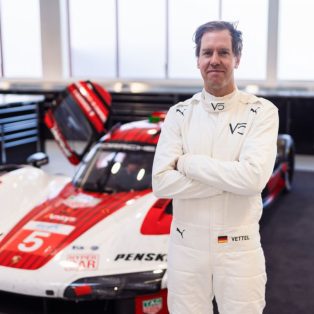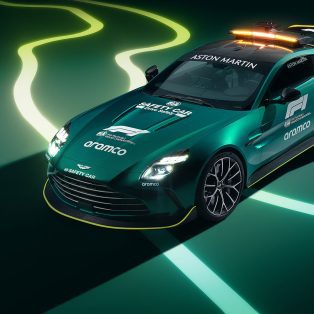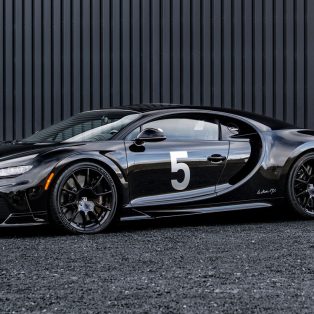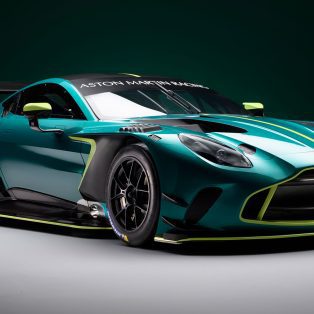1996 Toyota Celica GT-Four ST185
The Group A Toyota Celica GT-Four RC/ST185 made its competition debut on the Monte Carlo Rally, the opening round of the 1992 World Rally Championship series, the beginning of a competition history that was to be even more successful than its illustrious predecessor, the ST165.
It took great skill and ingenuity on the part of the designers and engineers tasked with developing the ST185 to come up with a machine capable of meeting all the performance and handling demands of international rallying. The finished product was named the ‘Carlos Sainz Edition’ in honour of the achievements of the celebrated Spanish driver, who in 1990 had become Toyotaâs first world rally champion.
In order to meet the homologation requirements for Group A competition, 5,000 GT-Four RC production versions of the Celica were manufactured and sold in Europe, Australia and Japan. This model was a logical development from the regular road-going Celica coupe, and was introduced in September 1989.
In competition, the ST185 did not enjoy immediate success and Toyotaâs engineers had to cope with a series of problems until mid-way through the year, when modifications to the suspension and powertrain allowed the car to show its full potential on the Catalunya Rally.
For the 1992 season, Toyota’s campaign was spearheaded by Sainz, partnered by Luis Moya, and Armin Schwarz, co-driven by Arne Hertz. Sainz recorded four victories and claimed his second WRC driversâ title. In the manufacturersâ championship Toyota was placed second, an encouraging result which raised hopes for an even better performance in the coming year.
The ST185 entered 1993 with a new livery, the green and red corporate colours of lead sponsor Castrol. A more significant change was the move from Pirelli to Michelin tyres, which succeeded in improving performance. There was a change of drivers, too, with triple World Champion Juha Kankkunen joining the team, along with Didier Auriol.
By claiming its sixth victory of the season at the Rally Australia, Toyota at last achieved its long-held ambition of claiming the WRC manufacturers’ championship. This in no way diminished the teamâs determination to gain further success: a new traction control system was tested at the 1,000 Lakes Rally, demonstrating Toyotaâs commitment to seeking the best in advanced technologies. Kankkunen amassed five wins to take his fourth driversâ title, 23 points clear of the field. The run of success included a Toyota 1-2-3-4 finish in the Safari Rally.
In 1994 the ST185 continued its dominance of the WRC, with Didier Auriol becoming the first Frenchman to take the driversâ title and Toyota winning its second consecutive manufacturersâ championship.
Story by Toyota
In Detail
| submitted by | Richard Owen |
| engine | 3S GTE Inline-4 |
| aspiration | Toyota CT26 Turbocharger |
| fuel feed | Electronic fuel injection |
| displacement | 1998 cc / 121.9 in³ |
| bore | 86 mm / 3.39 in |
| stroke | 86 mm / 3.39 in |
| compression | 8.5:1 |
| power | 220.0 kw / 295 bhp @ 5700 rpm |
| specific output | 147.65 bhp per litre |
| torque | 459 nm / 338.5 ft lbs @ 4000 rpm |
| wheel type | OZ Racing |
| front tires | Michelin |
| rear tires | Michelin |
| front brakes | Ventilated discs |
| f brake size | mm / in |
| rear brakes | Ventilated discs |
| r brake size | mm / in |
| f suspension | MacPherson struts with Bilstein shocksx |
| r suspension | MacPherson struts with Bilstein shocks |
| wheelbase | 2525 mm / 99.4 in |
| front track | 1510 mm / 59.4 in |
| rear track | 1510 mm / 59.4 in |
| length | 4410 mm / 173.6 in |
| width | 1745 mm / 68.7 in |
| height | 1300 mm / 51.2 in |
| transmission | 6-Speed Manual |
| gear ratios | :1 |





